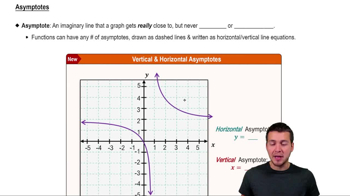Textbook Question
Match each function with its graph in choices A - D.
y = sec (x - π/2)
885
views
 Verified step by step guidance
Verified step by step guidance Verified video answer for a similar problem:
Verified video answer for a similar problem:



 5:43m
5:43mMaster Introduction to Tangent Graph with a bite sized video explanation from Patrick
Start learning